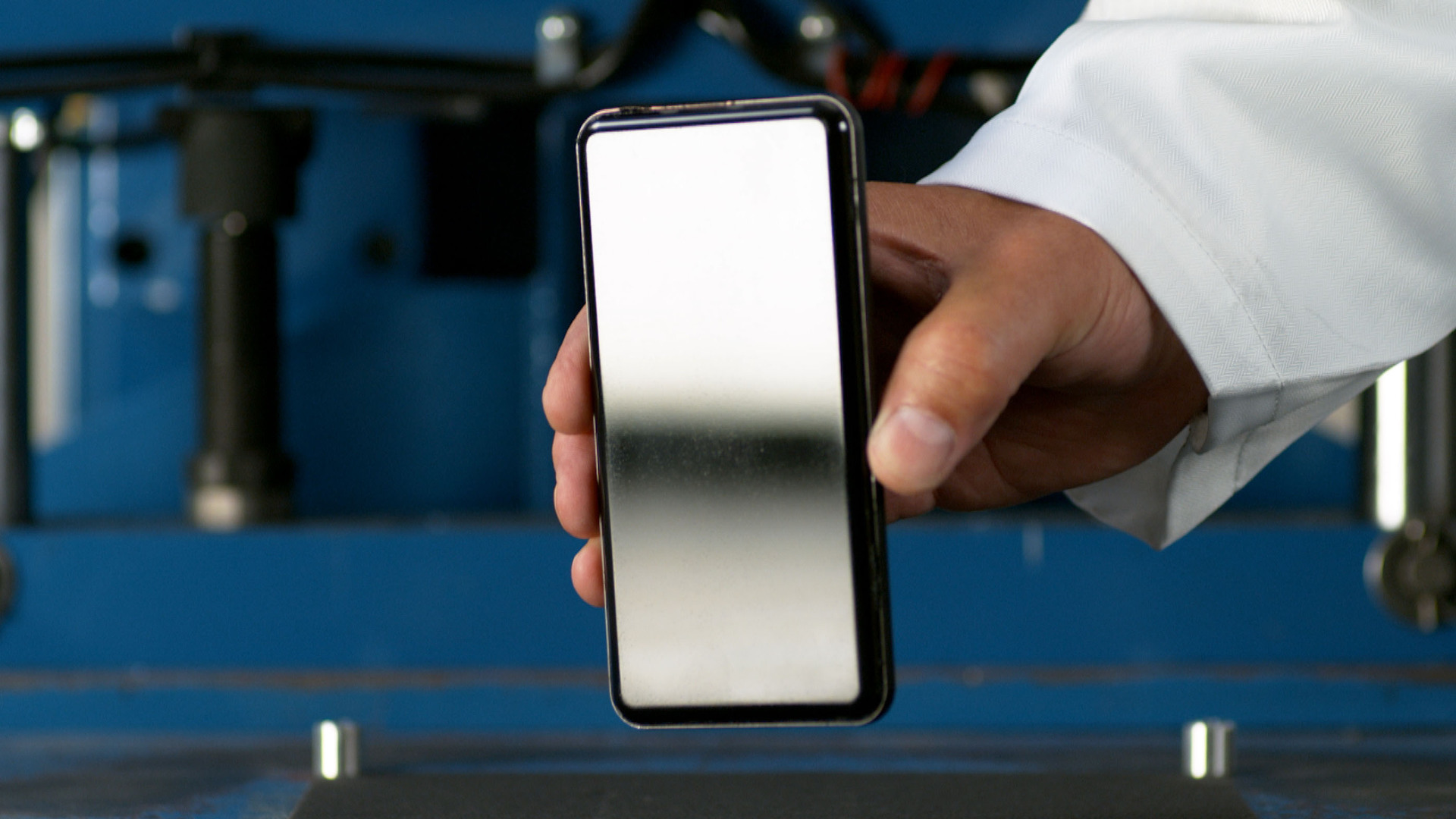A common feature on nearly every smartphone is Gorilla Glass or similar materials. This tough glass can resist scratches and other damage by keys, coins, and even sandpaper.

Gorilla Glass started as a brand name for Corning’s protective cover line. Today, the term has become an umbrella term for all toughened mobile device screen covers.
The history of this material is advantageous. According to the story, in 1952, one of the famous chemists of the company Don Stookey mistakenly increased the temperature of the furnace from 600 to 900 degrees Celsius because of a faulty controller.
He then expected that the photosensitive glass he invented for Corning would melt and destroy the furnace. Instead, he saw a “milky white plate” that didn’t break when he accidentally dropped it.
Gorilla glass is made of soda-lime glass composed primarily of silicon dioxide (SiO2). It consists of thin sheets of this glass, chemically treated to enhance its strength.
This treatment involves ions embedded into the surface and strengthening through atomic bonding, leaving the outermost layers intact.
What Are the Benefits of Gorilla Glass?
Since its discovery in the 1950s, there’s no looking back for the Gorilla Glass. In 2017 alone, at least 5 billion devices, from smartphones to televisions, were used. But what makes it so popular is its long list of supposed benefits:
1. Shatter Resistance
The primary benefit of Gorilla Glass is that it makes the screen shatter-resistant. Many people have accidentally dropped their phone on the ground and replaced the screen, but that won’t happen very often with this unique glass.
Mohs scale of mineral hardness is often used to describe how hard a material is. The higher you go on the scale, the harder it becomes for most objects to scratch their surface.
The average human can scratch most minerals with a fingernail (2), so corundum (9) would be challenging because it’s difficult for humans to cross. Diamond (10), however, is extremely rare and valuable because it is hard and because of its large applications industry, where its durability and strength are highly required.
Gorilla Glass has a Mohs hardness of around 5 or 6, which is even more complex than the average human fingernail. The ability to resist scratching makes it more difficult for substances to damage the surface, although that doesn’t mean that it’s not prone to breakage.
This is still tempered glass, which means a small nick can increase the stress on the material that it can shatter. For this reason, you need to send it to a screen repair expert immediately once you see cracks.
2. Durability
Due to its durability, Gorilla Glass can be used in many applications where durability is required without sacrificing quality. For example, smartphone screens are made from Gorilla Glass because they are constantly being dropped or banged around during everyday use. A screen protector would not have the same effect as an actual piece of Gorilla Glass because it wouldn’t handle much punishment.
3. Thinness
Another benefit is that it’s fragile, which is great for smartphone manufacturers who want to make the phone as sleek and nice-looking as possible while providing consumers with adequate protection. If Gorilla Glass were too thick, smartphones would be much bulkier than they already are.
4. Simplicity
The manufacturing process of Gorilla Glass is relatively simple compared to other materials used in the same applications. It begins with Corning dipping a hot glass rod into a vat of molten chemicals, crystallizing the surface and making it highly durable.
Gorilla Glass manufacturers say they don’t want to make their products too expensive because having something safe and reliable should be done without compromising quality or success in business. That’s why the price point for the product is relatively low when you think about what it does for smartphones.
It accounted for less than 10 percent of the company’s revenue in 2018. Nevertheless, the company is still making a profit without increasing their customers’ prices which is always good.
5. Optical Properties
Another benefit of Gorilla Glass is its optical properties than traditional soda-lime glass. This allows users to see better what’s on their screen, even when not looking straight on.
Some other smartphone materials can distort light or color when viewed at certain angles. But since Gorilla Glass has much higher clarity and transmits light very well, people can see their screens even when looking at them from extreme angles.
Because of this feature, people can use their touchscreen devices much more effectively because they won’t have any trouble seeing what’s on the screen, no matter how they hold it or where they look.
Mobile devices are more challenging than people think, partly thanks to glass. Hopefully, as innovation improves, Gorilla Glass will be more durable and damage-resistant.




